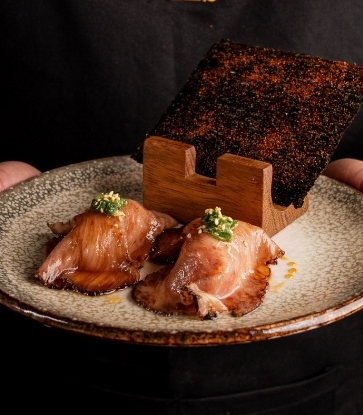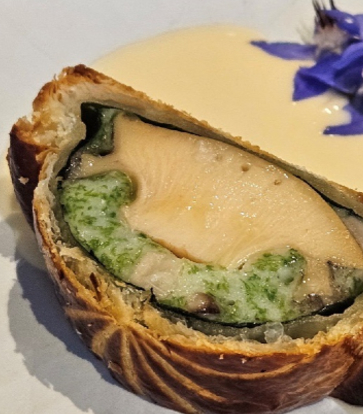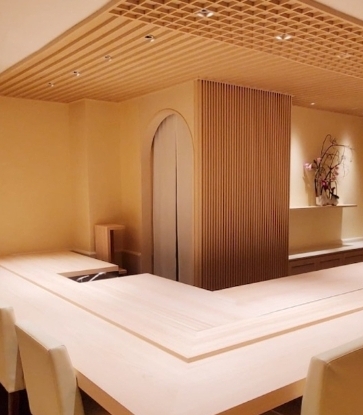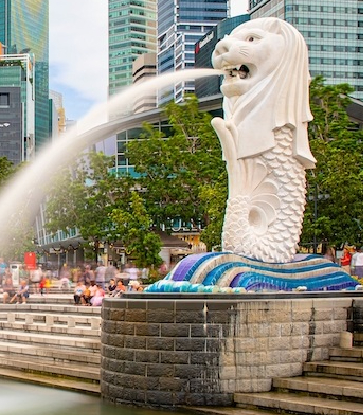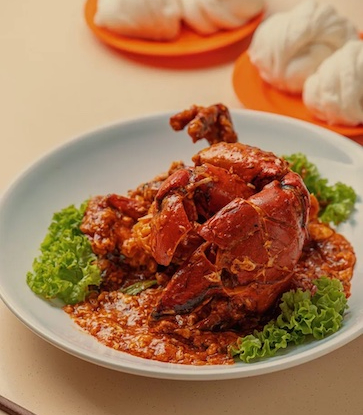While the concept of pairing wines with dishes is well-established, non-alcoholic tea pairings are slowly — but surely — gaining traction in Singapore’s fine-dining scene.
At Esora, a one-MICHELIN-Starred restaurant in Singapore renowned for blending “Japanese details with French techniques,” tea pairing emerges as a standout feature that seamlessly marries the culinary traditions of two cultures.
Esora’s resident tea specialist, Kate Pascual, observes a shift in Singapore’s food and beverage scene, with diners expressing curiosity about alternative beverage options beyond traditional wines. This evolving landscape has sparked innovative pairing ideas, including kombucha, juices, mocktails, and personalised libations.

So, how does Pascual determine the ideal tea pairing for a particular dish?
The key lies in embracing seasonality and collaborating closely with the culinary team. “It is crucial to collaborate closely with the chef and understand his culinary concept — kisetsukan —, which emphasises the emotional connection with the seasons,” explains Pascual. “Crafting a tea pairing menu that reflects seasonality entails not only selecting the right tea, but also considering how it interacts with various infusions — whether incorporating dehydrated ingredients, fresh fruits, leaves, or flowers — and assessing the overall flavour profile compatibility between the tea and the infusion.”
Pascual shares her expertise on pairing teas with various dishes:

Black Tea
Pairs well with: grilled meats, spicy dishes, thick broths, and rich desserts
“Black tea, characterised by its full-bodied and robust flavour, resulting from complete oxidation, pairs exceptionally well with hearty and flavourful dishes,” notes Pascual. “Examples include grilled meats, spicy curries, or desserts such as red bean paste with vanilla ice cream or chestnut.” She also suggests pairing teas with a bit of spice, such as kurosichimi, with thick broth soups to counterbalance their richness. At Esora, they use Baisen Kocha Japanese black tea, renowned for its slow and meticulous roasting process, delivering a round mouthfeel with notes of caramel fragrance and a complex, malty sweetness.

Green Tea
Pairs well with: umami-forward, seafood-based dishes; or clear and light broths
Unlike black tea, green tea undergoes minimal oxidation, preserving its green colour and fresh taste. Green tea leaves are shaded for approximately three weeks before harvesting. The shading reduces the light from reaching the plant, giving the tea a smooth, grassy, sweet, and umami taste.
“At Esora, we use the Gyokuro variety, which is considered one of the finest Japanese green teas. It has an umami, sweet, and grassy flavour — this tea will never go wrong with seafood, sashimi, fatty fish like yellowtail, grilled fish with green vegetables, as well as clear, light-based soups like chicken, clam, or dumpling soup.” Green teas can also be infused with citrus notes like yuzu, kabosu, or sudachi — a technique often employed by Pascual at Esora to enhance the overall flavour of the dish.

Oolong Tea
Pairs well with: fatty and fried foods, dishes with fruity elements
Oolong teas offer a spectrum between green and black teas. Its flavour profile ranges from floral and fruity, to toasty and nutty, depending on the level of oxidation. At Esora, Pascual selects oolong teas with fruitier notes to counterbalance the richness of sashimi or fried dishes. “One of our longstanding favourites at Esora is the Oriental Beauty from Northern Taiwan. This tea, discovered in the early 19th century by a local tea farmer, boasts a delightful honeyed sweetness and fruity, peachy undertones resulting from a leafhopper infestation.” Pascual appreciates the tea’s versatility for infusion with fruits, flowers, and herbs, often incorporating it into sparkling tea, or pairing it with dishes featuring fresh fruits, sashimi, or fried foods like chicken wings.

White Tea
Pairs well with: Lighter appetisers, seafood, and vegetable dishes like clams and dashi jelly
White tea is renowned for its delicate flavour profile. Harvested before the tea plant’s leaves fully open, white tea comprises tea buds and young leaves that undergo minimal processing, rolling, or oxidation. This gentle treatment results in a tea with a lighter profile and character compared to traditional black or green teas.
“At Esora, our preferred white tea is the Crescent Moon White Tea, boasting a fragrant nose with floral and fruity notes. This tea is characterised by a signature fruity sweetness reminiscent of apricot and sugarcane juice. Brewed at a high temperature, it offers a thick, round mouthfeel with a clean, lingering aftertaste indicative of its fresh harvest. With ageing, the tea develops a woody aroma.” Similar to oolong tea, white tea pairs excellently with fruity infusions and shines as a sparkling tea. When paired with food, opt for lighter dishes like appetisers, Japanese clams, or cold ebi (shrimp) dishes with dashi jelly.

Pu-Erh Tea
Pairs well with: heavier snacks and side dishes; dishes with an earthy flavour profile
Pu-Erh tea, a fermented variety hailing from Yunnan Province, China, boasts a complex, deep, and nuanced flavour profile. Brewed to a deep black colour with a full body and rich flavour, it undergoes microbial fermentation post-drying and rolling.
Despite Pu-Erh being a classic accompaniment to Cantonese fare, Pascual finds it challenging to pair the tea with the delicate flavours of Esora’s cuisine. “In my opinion, Pu-Erh tea is best enjoyed on its own to appreciate its complexity and fermentation process.”
For those inclined, Pu-Erh could possibly pair with snacks or side dishes like chocolate, heavier Chinese snacks such as mooncakes, or earthy-flavoured dishes and desserts. Personally, Pascual prefers Pu-Erh enjoyed in its pure form.

A Personal Favourite: Green Mango Sparkling Oolong Tea
Pascual reminisces about a personal favourite tea pairing she devised during the summer season — the Green Mango Sparkling Oolong Tea. Inspired by her Filipino heritage, where green mangoes are abundant during the summer season, she crafted this pairing to complement Esora’s signature Foie Gras Monaka, which features seasonal ingredients. “The bubbles from the tea cut through the richness of the foie gras, while the mango’s acidity enhances the dish’s fruity elements,” Pascual explains. This refreshing tea pairing serves as an invigorating prelude to the meal, opening up the palate for the culinary journey ahead.






